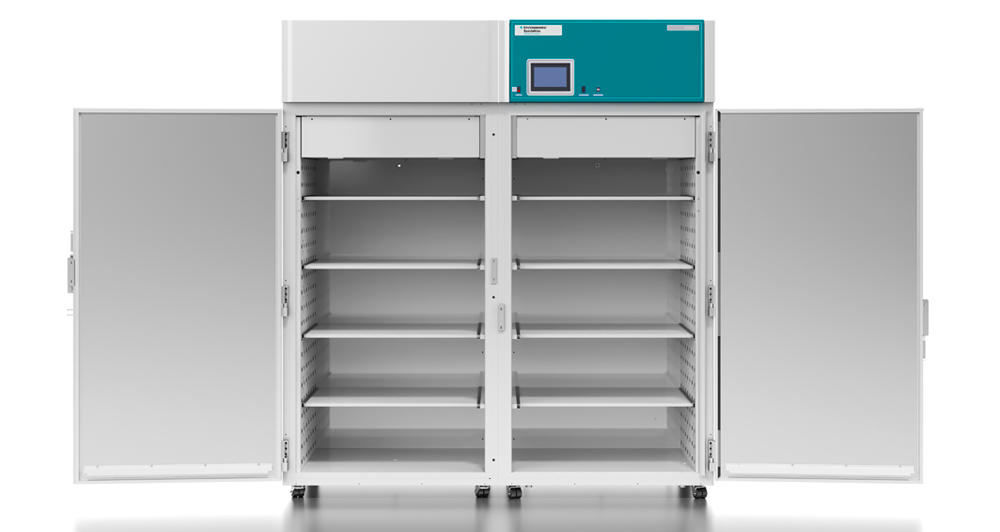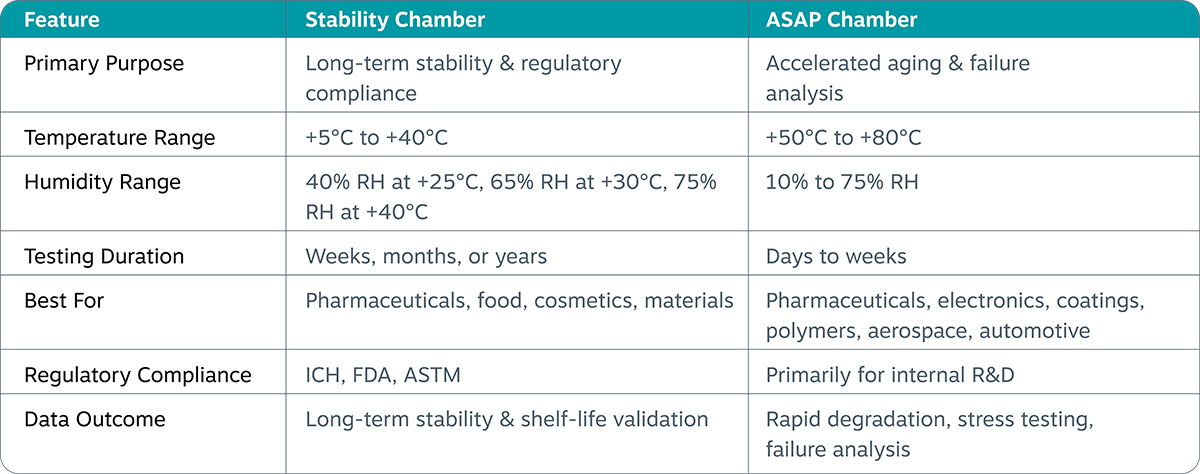Stability Chambers vs. ASAP Chambers: Understanding Key Differences and Environmental Testing Applications
04/23/2025
Share this article on LinkedIn ![]()

Stability chambers and Accelerated Stability Assessment Program (ASAP) chambers are both used for product testing under controlled environmental conditions. However, these chambers are designed for different purposes and cater to specific, often highly specialized industries, including pharmaceuticals, electronics, and materials science.
If you’re unsure whether you need a Stability Chamber or an ASAP Chamber, this guide will help you clarify their different capabilities and determine the best fit for your testing requirements.
What is a Stability Chamber?
A stability chamber is designed to maintain consistent temperature and humidity levels over an extended period. These chambers are primarily used for long-term stability studies, helping ensure that products retain their intended properties over time under specific conditions. We covered the details in this article.
Industries and Applications:
- Pharmaceuticals: Stability testing per International Council for Harmonisation (ICH) guidelines
- Food and Beverage: Shelf-life studies and packaging durability
- Cosmetics and Personal Care: Product integrity testing under controlled relative humidity (RH) levels
- Electronics and Materials: Long-term exposure assessment for reliability
Typical Conditions in a Stability Chamber:
- Temperature Ranges:
- +5°C
- 40-percent RH at +25°C
- 65-percent RH at +30°C
- 75-percent RH at +40°C
- Testing Duration: Weeks, months, or years
Why Use a Stability Chamber?
- Ensures compliance with regulatory standards (e.g., Food and Drug Administration, ICH, American Society for Testing and Materials)
- Provides reliable long-term data for product validation
- Simulates real-world storage conditions to assess product durability
What is an ASAP Chamber?
An ASAP chamber is built for rapid aging studies, helping manufacturers predict shelf-life and product degradation in a much shorter timeframe. Instead of running a stability test for months or years, an ASAP chamber compresses this time into days or weeks using extreme environmental conditions. It is not currently recognized by ICH guidelines.
Possible Industries & Applications
- Pharmaceuticals: Accelerated drug degradation studies
- Electronics: Evaluating reliability under extreme conditions
- Coatings and Polymers: Assessing heat and moisture resistance
- Aerospace and Automotive: Material stress testing
Typical Conditions in an ASAP Chamber:
- Temperature Range: +50°C to +80°C
- Humidity Control: 10-percent to 75-percent RH
- Testing Duration: Days to weeks
Why Use an ASAP Chamber?
- Potential to speed up product development by identifying weaknesses quickly
- Possibility to predict shelf life without long-term testing
- Simulates extreme real-world conditions to evaluate potential failure points
Stability Chamber vs. ASAP Chamber: A Side-By-Side Comparison

Which Chamber Should You Use?
- Use a stability chamber if you need long-term regulatory testing with controlled conditions. They are best for compliance-driven industries such as pharmaceuticals, food, and cosmetics.
- Use an ASAP chamber if you need fast product degradation testing to identify failure points and shelf-life projections quickly. They are ideal for research and development and accelerated aging studies in industries like electronics, aerospace, and coatings.
- Use both if your business requires regulatory stability data and accelerated failure analysis. A combination of both chambers can help ensure a well-rounded testing approach.